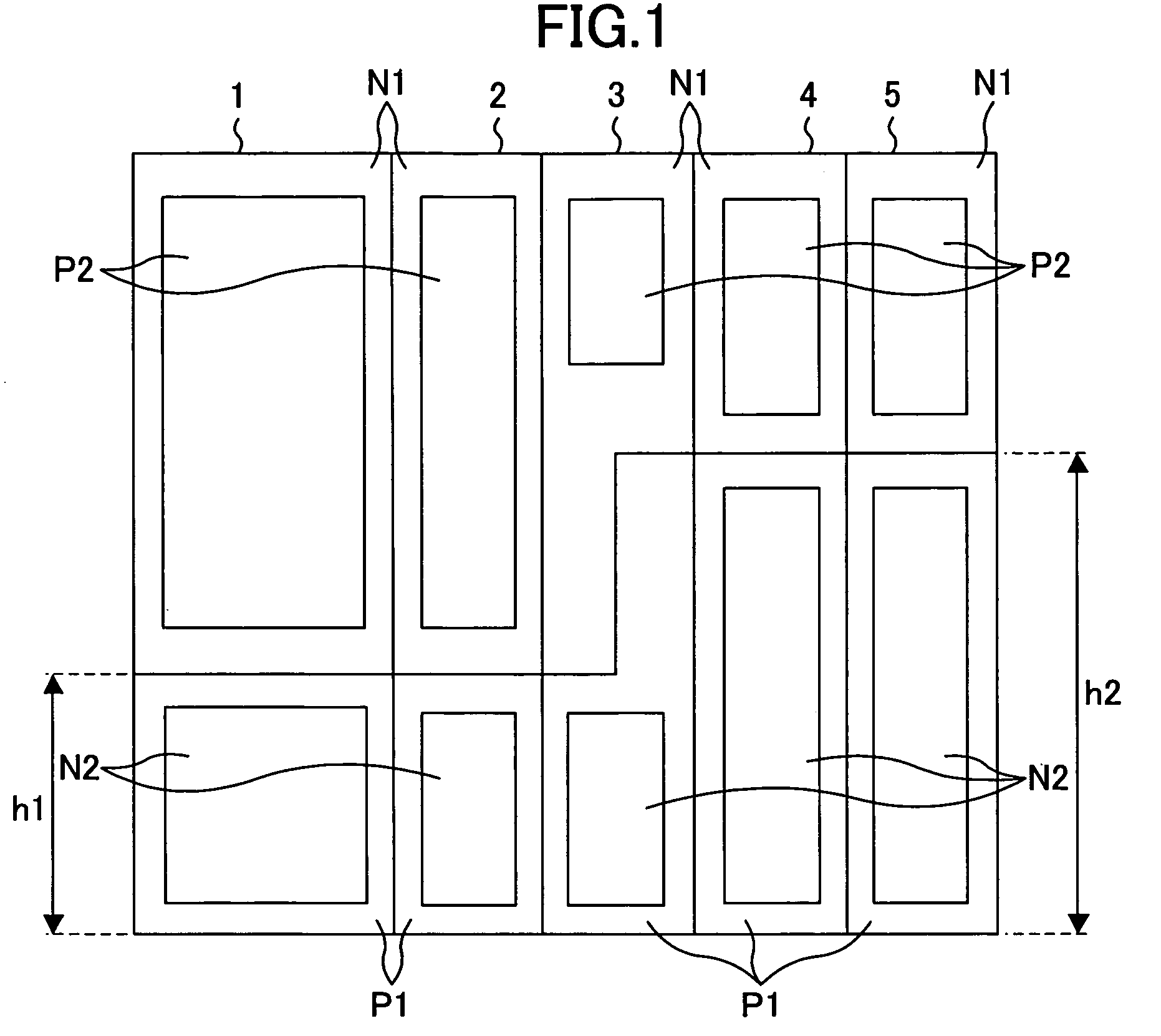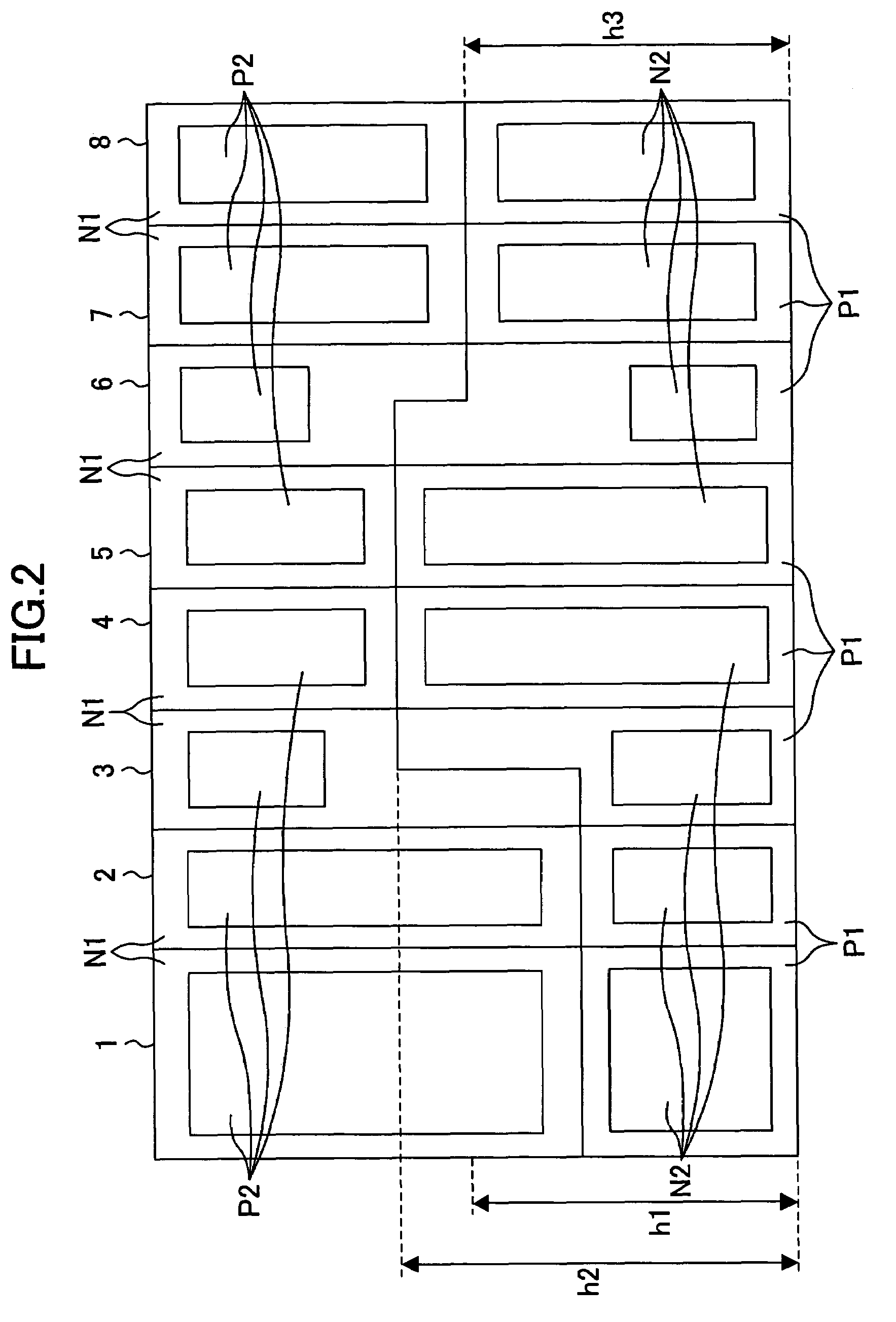Standard cell, standard cell library, semiconductor device, and placing method of the same
a technology of standard cell and semiconductor device, which is applied in the direction of solid-state devices, instruments, computer aided design, etc., can solve the problems of low level of area efficiency, reduced area efficiency, and reduced efficiency of insertion, so as to reduce the minimum area to be inserted, suppress the effect of increasing the area and reducing the area
- Summary
- Abstract
- Description
- Claims
- Application Information
AI Technical Summary
Benefits of technology
Problems solved by technology
Method used
Image
Examples
first example
[0080]FIG. 1 is a standard cell placement diagram illustrating an exemplary layout of a standard cell semiconductor device according to a first example of the present invention. Note that standard cells indicated with the same reference numeral are identical to each other throughout the drawings in the first example or later.
[0081]In FIG. 1, 1 to 5 each indicate a standard cell. Each standard cell comprises an N-well region N1 (upper side) and a P-well region P1 (lower side). The N-well region N1 has a P-type diffusion region (P-type active region) P2 for forming a P-channel transistor, and the P-well region P1 has an N-type diffusion region (N-type active region) N2 for forming an N-channel transistor.
[0082]In the standard cells 1 to 5, a large-size transistor is realized by setting the height of the standard cell to be high without dividing into a plurality of standard cells using a parallel structure, thereby preventing a reduction in the area efficiency and a reduction in the cu...
second example
[0087]FIG. 2 is a standard cell placement diagram illustrating an exemplary layout of a standard cell semiconductor device according to a second example of the present invention.
[0088]Standard cells 1 and 2 are first standard cells in which a size of the P-channel transistor is larger than that of the N-channel transistor, a size of the P-type diffusion region P2 is larger than that of the N-type diffusion region N2, and the P-well region P1 has a height h1 (first height) at both ends thereof. Standard cells 4 and 5 are second standard cells in which a size of the N-channel transistor is larger than that of the P-channel transistor, a size of the N-type diffusion region N2 is larger than that of the P-type diffusion region P2, and the P-well region P1 has a height h2 (second height) which is different from h1, at both ends thereof. Standard cells 7 and 8 are fourth standard cells in which a size of the N-channel transistor is equal to that of the P-channel transistor, and the P-well...
third example
[0096]FIG. 3 is a flowchart illustrating a placing method for a semiconductor device according to a third example of the present invention. FIGS. 4 to 8 are diagrams illustrating a result of placement of standard cells based on the placing method of FIG. 3, and the standard cells. Hereinafter, the placing method of FIG. 3 will be described with reference to FIGS. 4 to 8.
[0097]In FIG. 3, S101 is a standard cell placing step of providing an initial placement in which standard cells having different well border line heights coexist.
[0098]FIG. 4 is a standard cell placement diagram illustrating a result of the placement in the standard cell placing step S101. Standard cells 104, 105, 108, 109, and 111 are each a standard cell (first standard cell) whose P-well region has a height h101 (first height). Standard cells 106, 107, and 110 are each a standard cell (second standard cell) whose P-well region has a height h102 (second height) which is different from the height h1.
[0099]At the tim...
PUM
 Login to View More
Login to View More Abstract
Description
Claims
Application Information
 Login to View More
Login to View More - R&D
- Intellectual Property
- Life Sciences
- Materials
- Tech Scout
- Unparalleled Data Quality
- Higher Quality Content
- 60% Fewer Hallucinations
Browse by: Latest US Patents, China's latest patents, Technical Efficacy Thesaurus, Application Domain, Technology Topic, Popular Technical Reports.
© 2025 PatSnap. All rights reserved.Legal|Privacy policy|Modern Slavery Act Transparency Statement|Sitemap|About US| Contact US: help@patsnap.com



